Ireland's 'untold black history' focus of exhibition
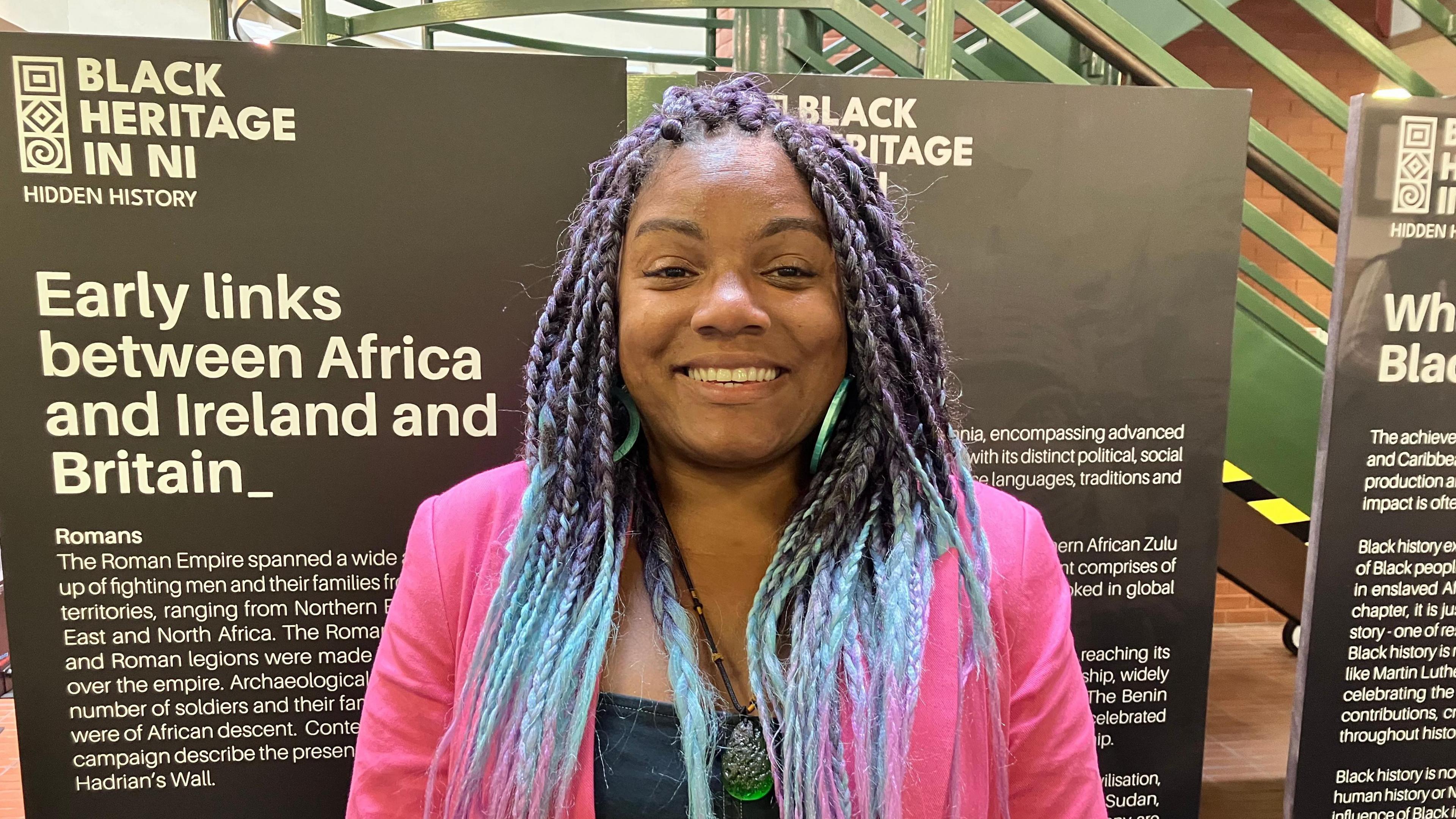
Chantelle Lunt is a support researcher on the project
- Published
A new exhibition is showcasing the stories of black people who helped shape local society throughout history.
Black Heritage NI: Hidden History aims to highlight the impact of several individuals whose contributions may have gone largely unrecognised.
It traces black history as far back as the Viking and Roman eras, through to the presence of African American GIs stationed in Northern Ireland during World War Two and highlights black victims of the Troubles.
Among those featured are Rachael Baptiste, a trailblazing singer who broke barriers in Irish music, and Dr Raphael Armattoe, a Nobel Prize–nominated scientist.
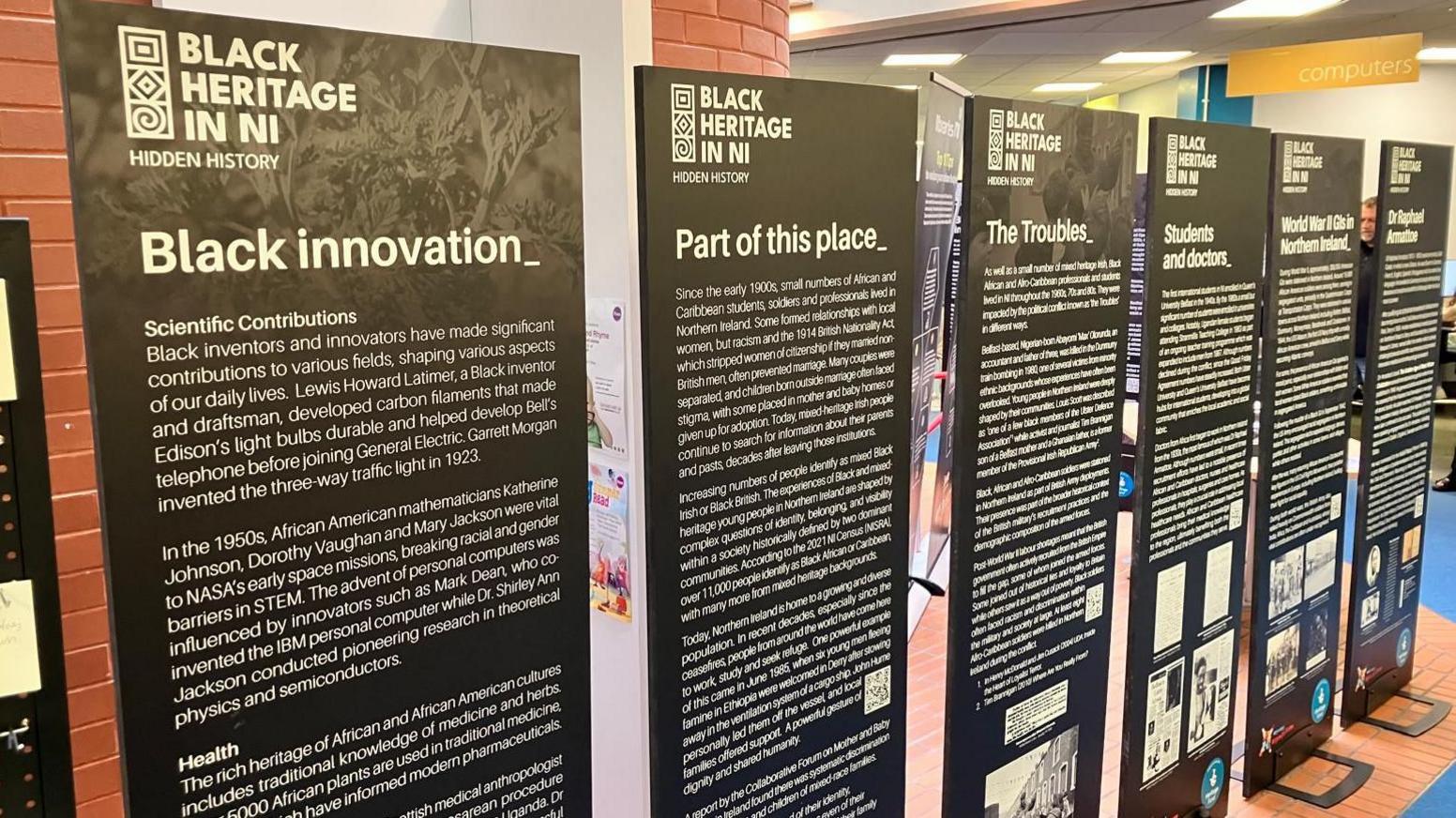
The interactive exhibition will be in Derry for another month before moving to Strabane, Coleraine, Dungiven and then Belfast
The exhibit, which opened in Londonderry's central library this week, aims to "challenge conventional narratives" and bring what are described as "long-neglected stories" into the public eye.
Dr Naomi Green, who is the lead researcher for the project, said took several years to bring to fruition.
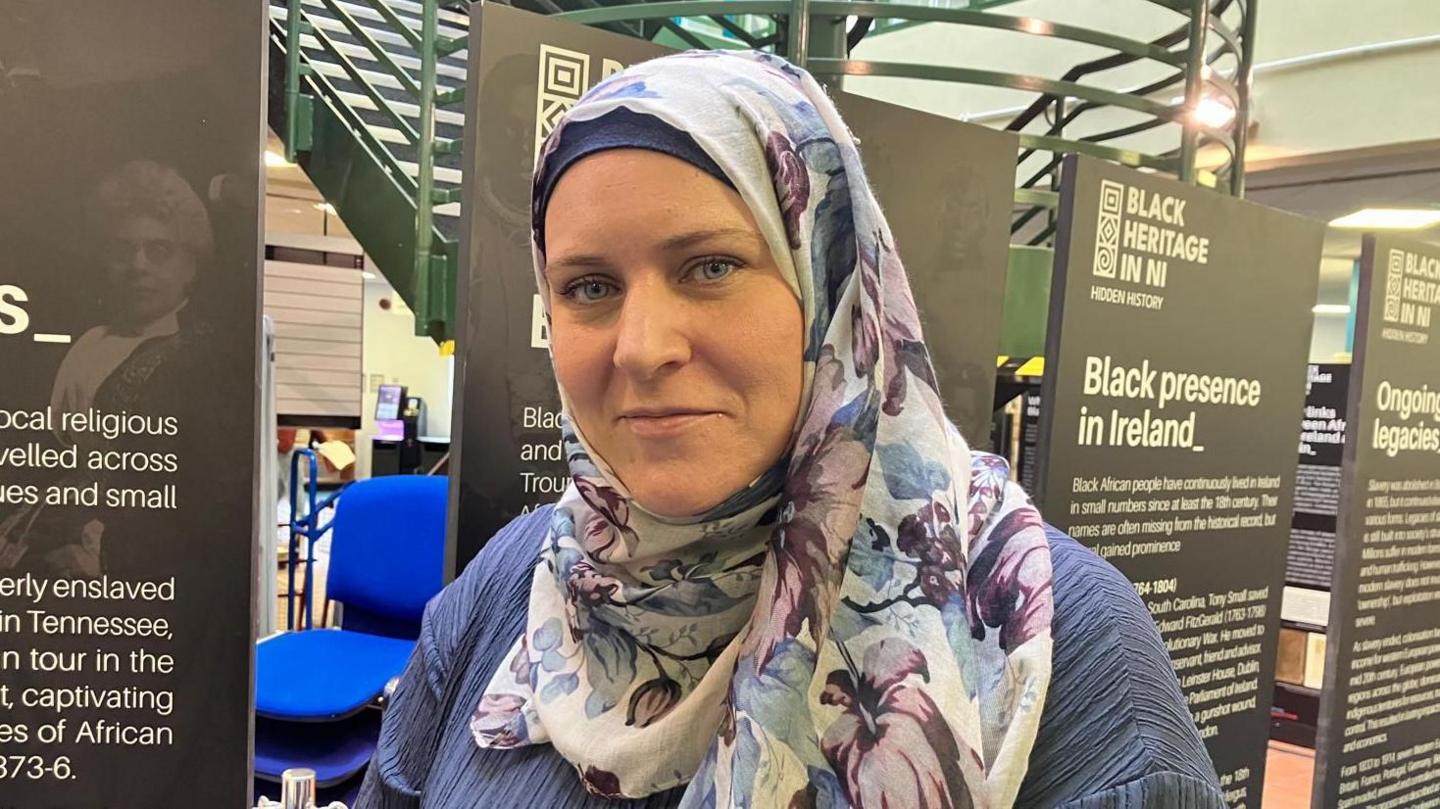
Dr Naomi Green is the lead researcher for the project
"It's called hidden history for a reason," Dr Green told BBC Radio Foyle's North West Today programme.
"I think a lot of people don't fully understand the complexity of our history here and that it is a little bit more than just the Orange and Green.
"I mean, everyone has a story, but I think so much of our history - especially our local history - has maybe been focussed on the two dominant communities here, which is of course part of our history, but these people [in the exhibition] are also part of our history.
"Also, when people talk about black history, they tend to think of America, they think of Rosa Parks and perhaps individuals who are more internationally famous, but these individuals in this project have shaped our stories in different and often subtle ways.
"I think it's just fantastic to name them and also celebrate them."
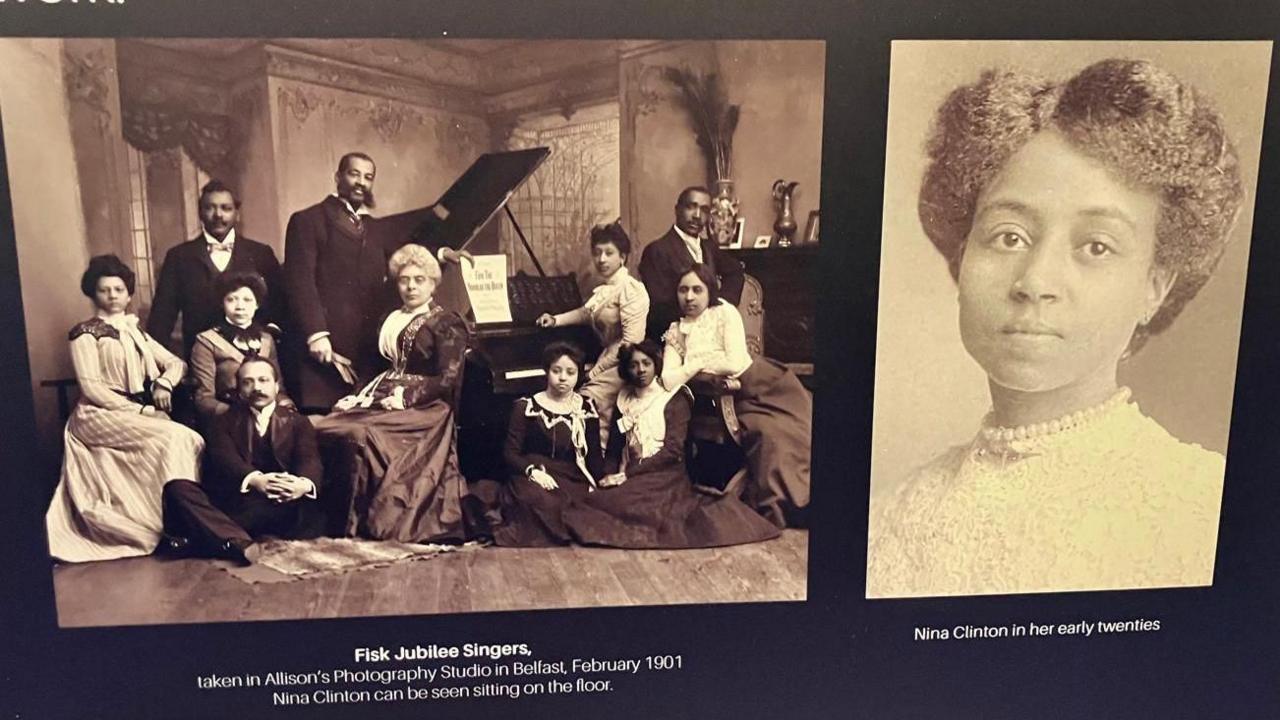
Nina Clinton was part of the Fisk jubilee Singers, a group composed of formerly enslaved men and women from Fisk Jubilee University in Tennessee
Dr Green said one person who particularly stood out for her when compiling the project was singer Nina Clinton, who was part of the Fisk Jubilee Singers, a group composed of formerly enslaved men and women from Fisk Jubilee University in Tennessee.
"Nina wrote some of the most beautiful handwritten letters home to her mother," Dr Green said.
"Her granddaughter still has those letters to this day, and I was able to connect with her, and she was able to share those letters, including one that was written in Belfast.
"To hear her voice as an 18-year-old woman coming to Belfast, experiencing the factories and people here, was just beautiful."
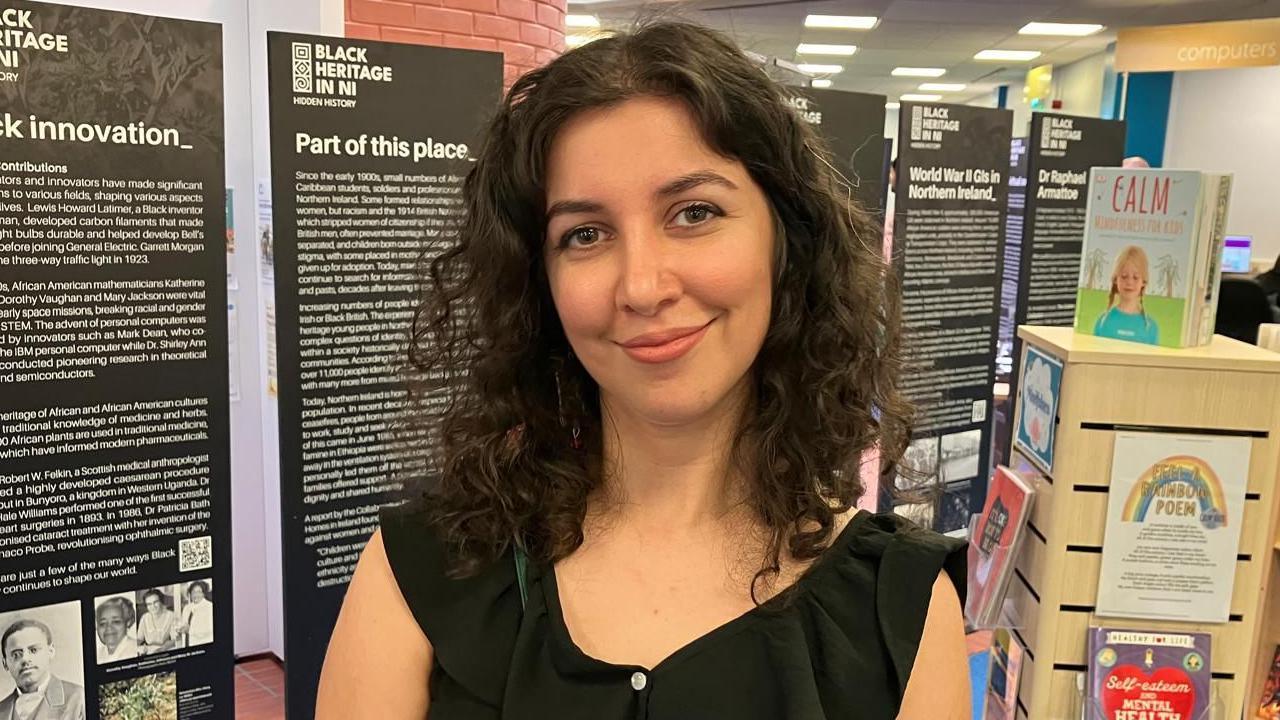
Aynaz Zarif, who is programme manager of the exhibit, says so much work has gone into telling as many people's stories as possible
'Black history is also Irish history'
Chantelle Lunt, a support researcher on the project, said the aim was to showcase people who are deserving of recognition and to challenge people's preconceptions of what black history actually is.
She said a lot of black history was focussed around the transatlantic slave economy, but there was much more to it - especially in places like Ireland.
"It is really important, especially during times like the ones we are in now, when there is often a prominent anti-migrant narrative and some people speak as if migration and diversity is something that is completely new," she said.
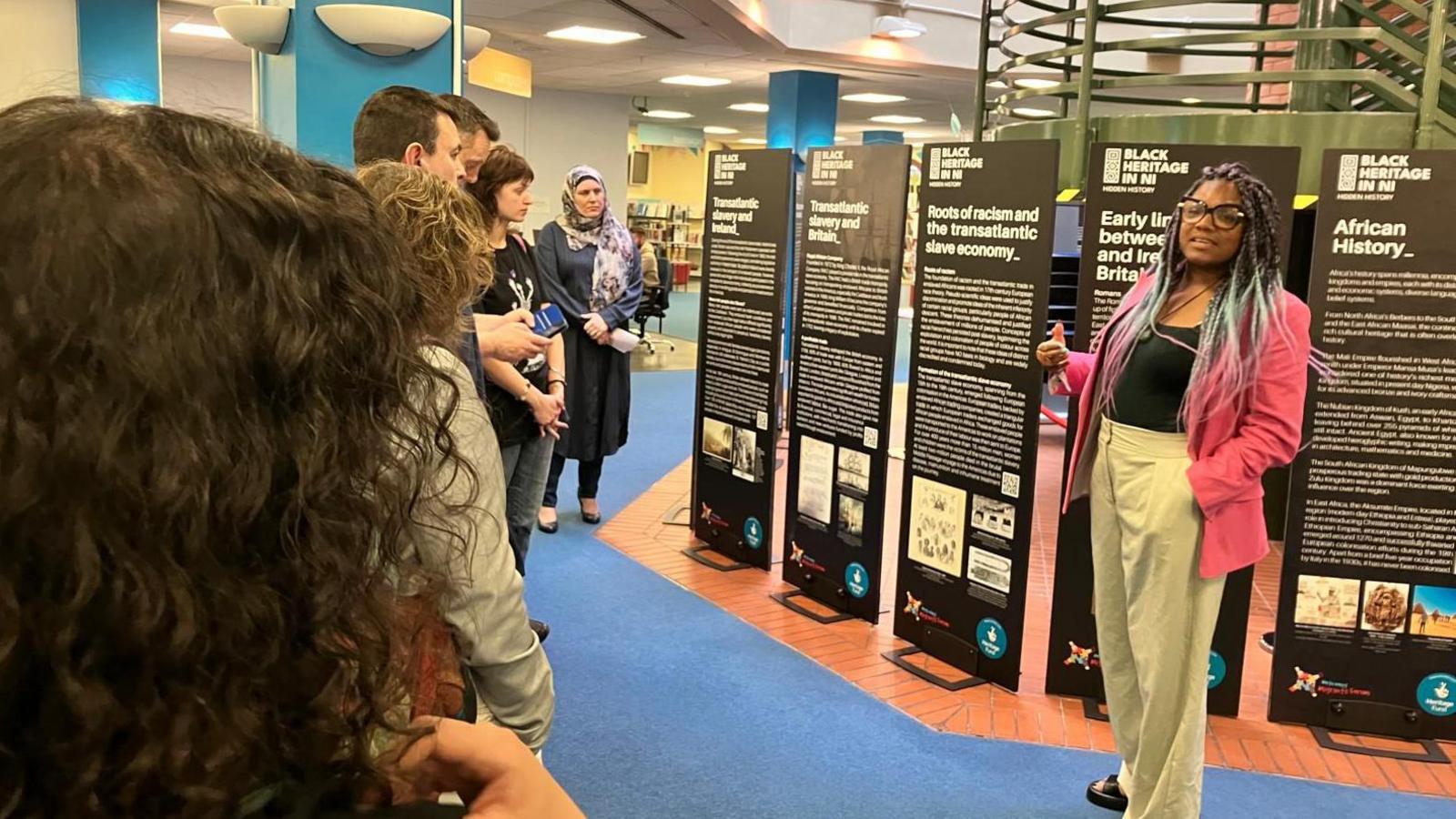
Chantelle Lunt says so many black people have made vital contributions to communities in both Northern Ireland and the Republic
"A project like this is vital in highlighting not only the complexities of black history and the fact that it predates the transatlantic slave economy, but also in showcasing black innovators who helped pass on scientific and mathematical knowledge," Ms Lunt said.
“It shows the contributions of black people to communities - such as many being drafted in from the Commonwealth to aid the post-World War Two recovery effort - as well as the influence of civil rights activism on local black people, particularly around abolition.
"It's so important to highlight these stories and show that black history is also Irish history."
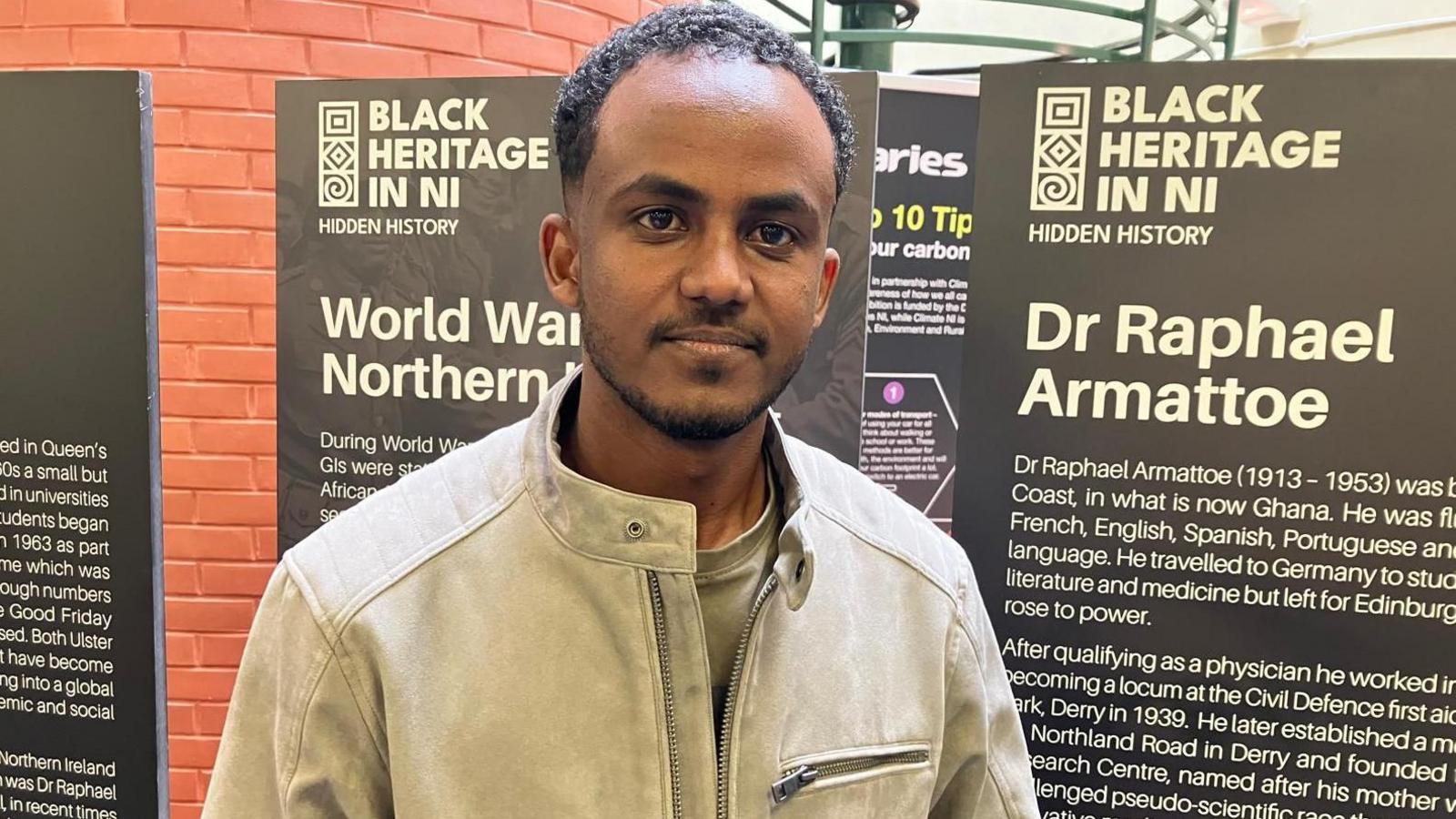
Mutwakil Bella encouraged everyone to come and visit the project and find out something new
Mutwakil Bella, who is originally from Eritrea in east Africa and now lives in the north west, was at the launch.
"It is lovely to be here because I am an asylum seeker, so I can understand and relate to some of the people showcased in a way," he said.
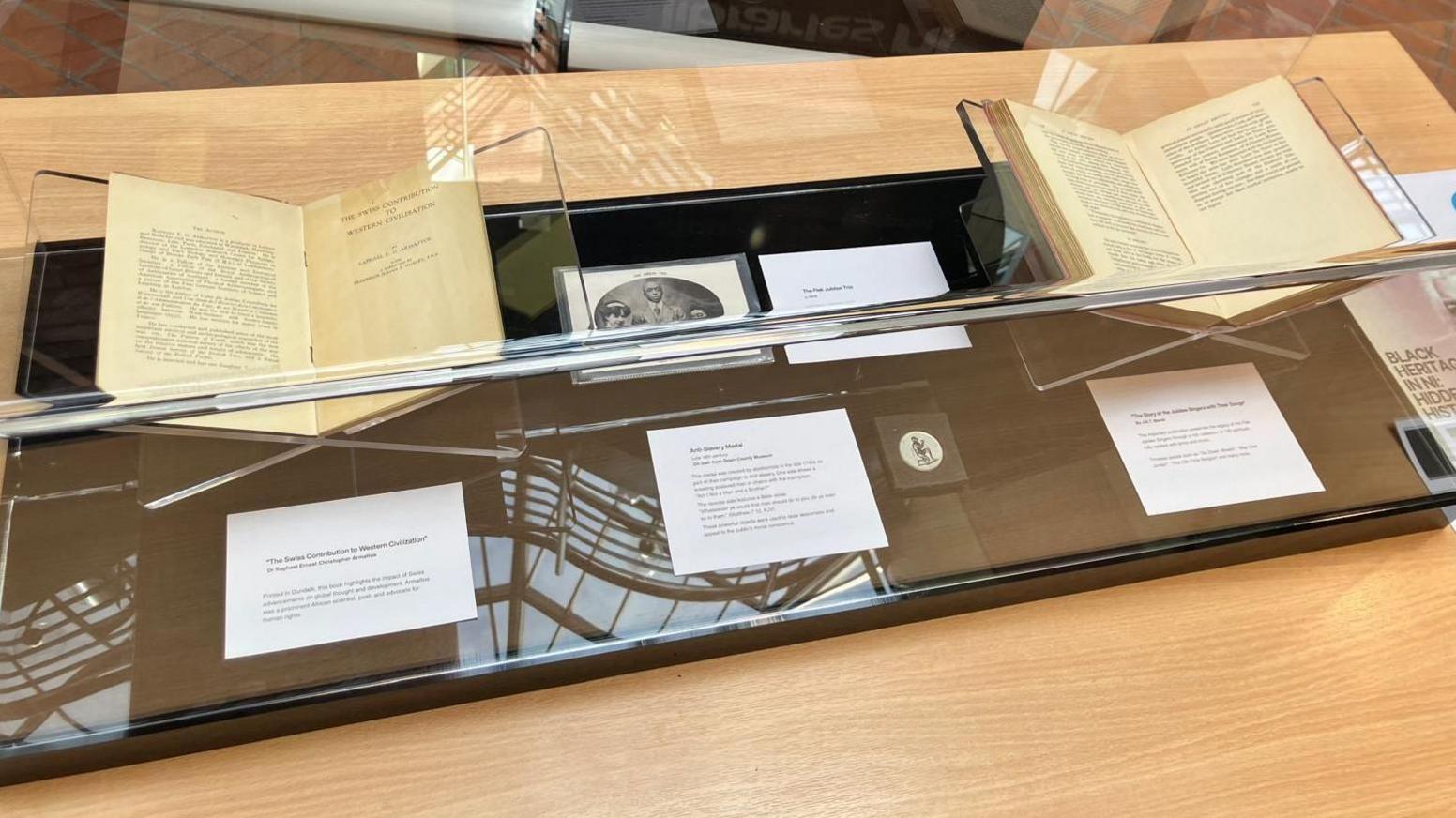
A number of physical displays are also on offer in the exhibition
The interactive museum exhibition, which uses QR codes, will be in Derry for another month before moving to Strabane, Coleraine, Dungiven and then Belfast.